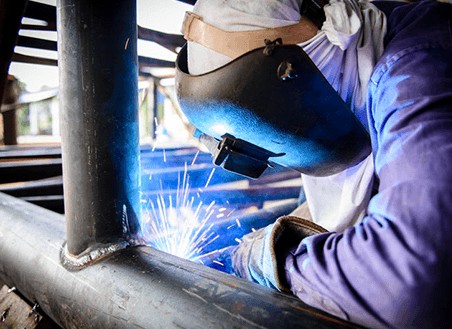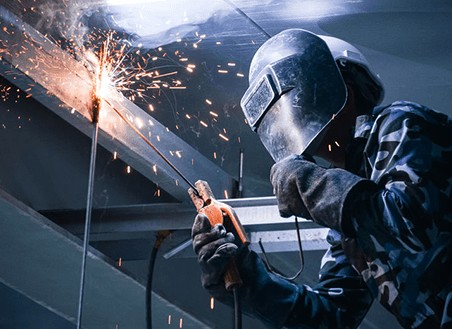
The 4 Basic Types Of Welding By Eagle National Steel
Wood glue, screws and nails will only get you so far in the world of construction -- some jobs just call for the strength of steel. When you need to fuse metal components together permanently, you've got to know how to weld. At Eagle National Steel, we stock more than just steel -- we stock all the tools, materials and equipment you need for all your metalworking, fabrication and construction needs.
Just getting started in the world of welding? We'll introduce you to the four basic types of arc welding below. There are more exotic methods out there too, but this is a good place to begin testing your mettle when it comes to welding metal. If you have any questions, you're looking for some new tools or just want to browse our extensive selection, come say "Hello!" to our friendly team at Eagle National Steel in Hutchins, TX.

4. Shielded Metal Arc Welding
Also known as Stick Welding, Shielded Metal Arc Welding is arguably the simplest method of arc welding. It's common and versatile and therefore a great method for beginners to start out with. In stick welding, the business end of the welding gun is called an electrode. The electrode creates an electrical arc between itself and the base metal. This arc gets hot enough to melt the material as well as the electrode itself. The electrode is slowly consumed as it adds filler material to form your welds.
In stick welding, welds are protected from impurities by a slag, which forms on top of your welds. Slag protects your welds as they cool, and can be removed to reveal the final weld after everything has cooled down.

3. Gas Metal Arc Welding
Also called MIG Welding, Gas Metal Arc Welding is slightly different from stick welding, but both processes are similar. Gas Metal Arc Welding uses a wire-fed electrode that also serves as the filler metal, just like in Stick Welding. But unlike Stick Welding, instead of slag, an inert gas shield is formed around the weld site. As you weld, this gas shield protects the molten weld pool from impurities in the air.
2. Flux-Cored Arc Welding
Flux-Cored Arc Welding is very similar to Gas Metal Arc Welding -- so much so that you can often use the same welding machine to do the job. The difference is the electrode itself. Instead of a simple wire electrode being fed through the welding gun, a hollow electrode filled with a flux core (hence the name) is fed through the gun. This flux material melts and protects your welds like in stick welding, but the welding process is more similar to MIG welding. You can even protect your welds with both slag and an inert gas shield in a process called Double Shield Welding. Flux-Cored Arc Welding is especially useful in tricky conditions, like outdoors in the wind where the gas shield would be blown away -- your welds will still be shielded by the flux core material as it forms slag.

1. Gas Tungsten Arc Welding
Perhaps better known as TIG Welding, Gas Tungsten Arc Welding is a bit of an oddball. Instead of a consumable electrode, it uses a permanent electrode made from tungsten, which is strong enough that it doesn't melt. Instead, you'll be adding filler material with your free hand. With one hand holding the torch and the other holding the filler material, TIG welding can be technically difficult and take extra practice to nail down the technique. The main advantage of Gas Tungsten Arc Welding is that it can be more precise and can be used to weld a wider variety of metals than other methods.




